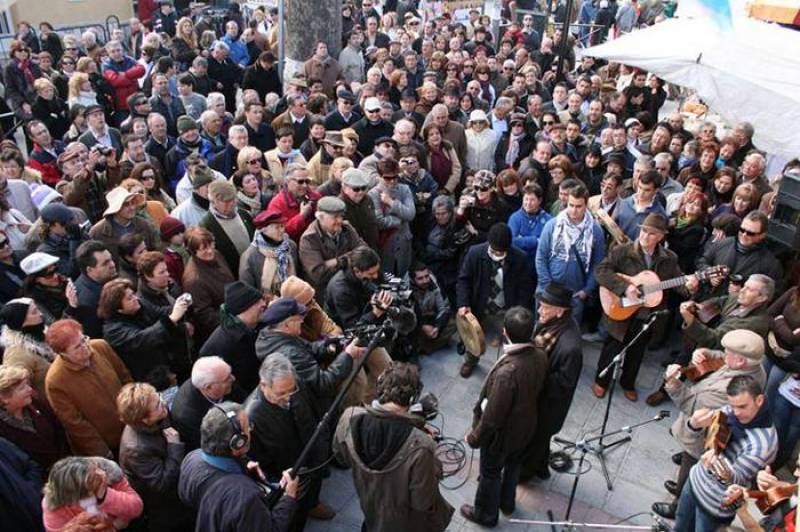

Guidelines for submitting articles to Hacienda Riquelme Golf Resort Today
Hello, and thank you for choosing Hacienda Riquelme Golf Resort.Today to publicise your organisation’s info or event.
Hacienda Riquelme Golf Resort Today is a website set up by Murcia Today specifically for residents of the urbanisation in Southwest Murcia, providing news and information on what’s happening in the local area, which is the largest English-speaking expat area in the Region of Murcia.
When submitting text to be included on Hacienda Riquelme Golf Resort Today, please abide by the following guidelines so we can upload your article as swiftly as possible:
Send an email to editor@spaintodayonline.com or contact@murciatoday.com
Attach the information in a Word Document or Google Doc
Include all relevant points, including:
Who is the organisation running the event?
Where is it happening?
When?
How much does it cost?
Is it necessary to book beforehand, or can people just show up on the day?
…but try not to exceed 300 words
Also attach a photo to illustrate your article, no more than 100kb

The village of Barranda in Caravaca de la Cruz
A popular rural tourism destination with a prestigious musical museum on the high ground of north-western Murcia
 Barranda is a small village in the high ground of north-western Murcia on the RM-730 road between Caravaca de la Cruz and La Puebla de Don Fadrique in the province of Granada, and has become a popular rural retreat which attracts visitors all year round due to its cool climate – snow is far from uncommon in winter – and the musical traditions of the locality.
Barranda is a small village in the high ground of north-western Murcia on the RM-730 road between Caravaca de la Cruz and La Puebla de Don Fadrique in the province of Granada, and has become a popular rural retreat which attracts visitors all year round due to its cool climate – snow is far from uncommon in winter – and the musical traditions of the locality.
 These traditions are kept alive by the Museum of Ethnic Instruments, which houses the Carlos Blanco Fadol collection, the “Cuadrillas” festival which takes place over the last weekend of January every year, and the “A La Luna de Barranda” summer folk music concert cycle, which draws in good crowds including those who are spending the summer away from the hustle and hustle (and heat) of the coast!
These traditions are kept alive by the Museum of Ethnic Instruments, which houses the Carlos Blanco Fadol collection, the “Cuadrillas” festival which takes place over the last weekend of January every year, and the “A La Luna de Barranda” summer folk music concert cycle, which draws in good crowds including those who are spending the summer away from the hustle and hustle (and heat) of the coast!
The village stands close to the River Argos, the mountains of Sierra de Mojantes and Sierra del Gavilán, and the natural beauty spot of Las Tosquillas, just a kilometre or so outside the village. It is home to under 1,000 residents but this figure swells considerably during holiday periods, with plenty of rural accommodation available.
The most important fiestas of the year are those which are held in honour of the Virgen de la Candelaria between the last Sunday of January and February 2. These feature the Día de las Cuadrillas, a folk music and dancing event which has been awarded Regional Tourist Interest status.
The history of Barranda goes back at least to Iberian and Roman times, as is testified by the archaeological discoveries of the remains of several “villae” in the area, while in later centuries the Moors created irrigation channels and systems some of which are still in use today. After the “Reconquista” of this part of Spain by Christian forces in the 13th century Barranda, like Caravaca, was close to the ever-changing boundary between the lands belonging to Aragón, Castilla and the remaining Nazrid Moorish kingdom of Granada.
By the 16th century there is documented reference to the place known as “Fuen Barreanda", which was characterized by a proliferation of natural water sources, but it was not until the liberation of land ownership laws in the 19th century that the village truly began to grow in population.
 At the centre of the village is the relatively modern church dedicated to the Purificación or Candelaria. Building began in 1964 and the church was consecrated two years later, and of course the architecture is modern in style with plenty of vertical and horizontal lines – perhaps out of keeping with the rustic surroundings. The inside is not overly decorated and the ambience is determined by the light from numerous stained glass windows.
At the centre of the village is the relatively modern church dedicated to the Purificación or Candelaria. Building began in 1964 and the church was consecrated two years later, and of course the architecture is modern in style with plenty of vertical and horizontal lines – perhaps out of keeping with the rustic surroundings. The inside is not overly decorated and the ambience is determined by the light from numerous stained glass windows.
The most important pieces of religious artwork are the figure of La Candelaria which stands above the altar, a ceramic mosaic Bia Crucis, the four evangelists who flank the main entrance and the oil paintings above the main altar.
Prior to this church a simpler building had existed since the 17th century but it slowly declined in condition.
For more local information, including the Holy Jubilee Year as well as local news and what’s on, go to the home page of Caravaca Today.
Oficina de turismo de Cartagena
 Cartagena tourism information
Cartagena tourism information
Where to find basic tourism information and information about historical sites and places to visit in Cartagena, Spain.
Cartagena has a wealth of historical sites, including the Roman Theatre Museum, Archaeological Museum, ARQUA Subaquatic Archaeology Museum, Panoramic lift, Civil War Air raid Shelter and Military and Naval Museums, as well as Tourist Bus and Tourist Boat which ferries visitors across to the Fuerte de Navidad.
There is one main Tourist Information Office and 2 tourist information points, the main one being in the Muralla Púnica Interpretation centre in Calle de san Diego and the other next to the Civil War Air Raid Shelter and Panoramic lift.
The office in the Plaza del Ayuntamiento is the easiest place to pick up a map if you've come into the port from a cruise ship, and has a few basic  leaflets, but not a lot else.
leaflets, but not a lot else.
The information point for the Puerto de Culturas attractions is by the Panoramic lift and Civil War Air Raid shelter in Calle Gisbert, although maps and leaflets are available at any of 3 information points.
There is plenty of in depth information about Cartagena in the dedicated Cartagena section, accessed via the map box at the bottom of every article page or by using the town search box at the top of the page. the introduction gives basic information about the city and then readers can select from the subjects below for information about the city, or the rest of the municipality.
Tourist Offices:
Oficina Municipal de Turismo Puertas de San José
Plaza Almirante Bastarreche s/n
Opening hours: weekdays 10.00 to 14.00 and 16.00 to 18.00, Saturdays 10.00 to 13.00.
Oficina Municipal de Turismo Muralla Púnica
Calle de San Diego, 25
30202, Cartagena
Telephone 968 52 14 27
Click for map, Tourist information office Muralla Púnica.
Opening hours.
31st July to 15th September, Monday to Sunday, 10am to 8pm
31st March to 30th June, Tuesday to Sunday, 10am to 7pm.
16th September to 4th November, Tuesday to Sunday 10am to 7pm.
5th November to 30th March, Tuesday to Sunday 10am to 5.30pm.
Punto de Informacion Turistica
 This is on the side of the Palacio Consistorial in Cartagena ( The Town Hall)
This is on the side of the Palacio Consistorial in Cartagena ( The Town Hall)
Plaza del Ayuntamiento S/N
Cartagena, Spain
Tel 968 128 955
Click for map, Tourist Information point, Plaza del Ayuntamiento, Cartagena
Opening hours
May to September: Monday-Saturday 10am-1.30pm and 5pm-7pm
Sunday 10.30am-1.30pm.
October to April: Monday-Saturday 10am-2pm and 4pm-6pm
Sunday 10.30am-1.30pm.
Cartagena - Punto de Información Turística Ascensor Panorámico
Calle Gisbert, 10
30202 CARTAGENA
Opening hours:
From 31st March to 30th June, Tuesday to Sunday 10am to 7pm
Semana Santa, Monday to Sunday 10am to 7pm
From 16th to 30th September (Cartagineses y Romanos) Tuesday to Sunday: 10am to 7pm.
From1st October to 4th November , Tuesday to Sunday 10am to 7pm
From 5th November to 30th March, Tuesday to Sunday 10am to 5.30pm.
From 1st July to 15th September, Monday to sunday 10am to 8pm
Click for map, Panoramic Lift, Cartagena




































